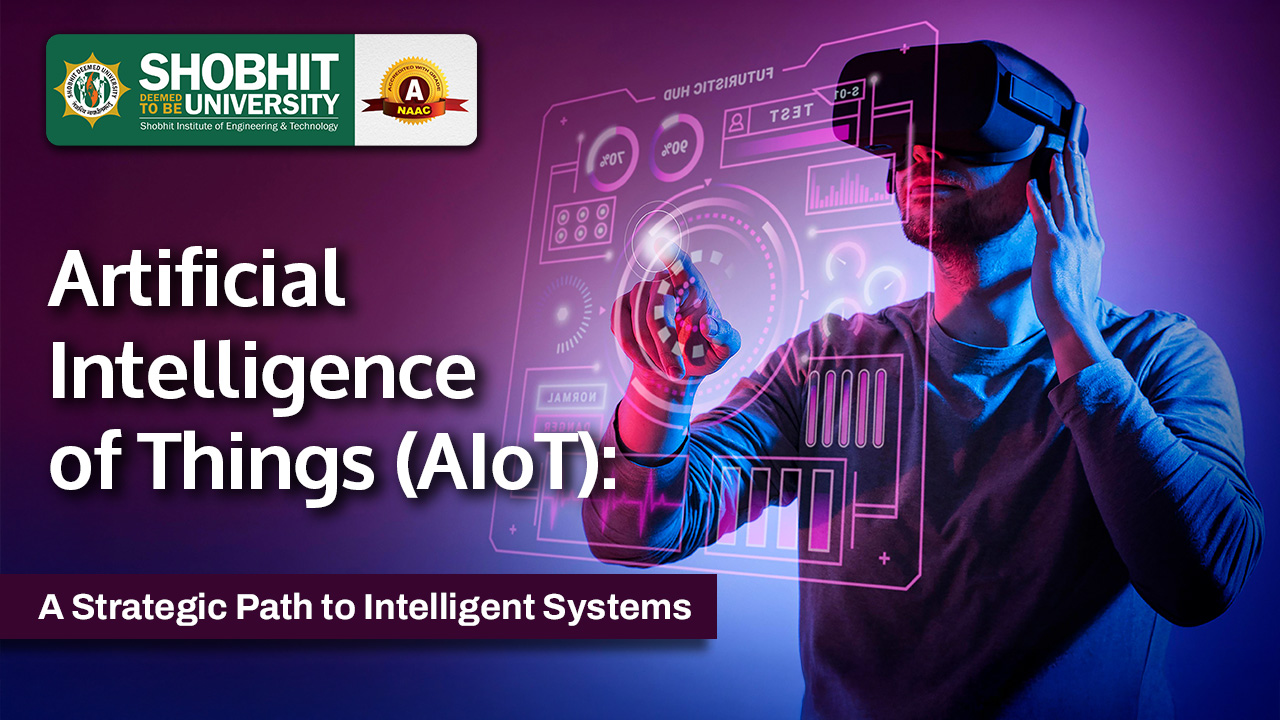
Artificial Intelligence of Things (AIoT) A Strategic Path to Intelligent Systems
In today’s digital era, the convergence of Artificial Intelligence (AI) and the Internet of Things (IoT), collectively known as the Artificial Intelligence of Things (AIoT), is revolutionizing present systems operation. AIoT transforms traditional infrastructures into intelligent, adaptive, and autonomous networks. IoT offers the means for devices to collect, transmit, and exchange data. AI provides the tools to analyze that data, extract insights, and make decisions with negligible human intervention. This synergy creates systems that are not only connected but also capable of continuous learning and improvement.
IoT primarily involves connecting physical objects such as sensors, machines, vehicles, and wearables that gather real-time data from the environment. However, data alone is not valuable without interpretation and for interpretation AI becomes essential. Application of Machine learning and Deep learning algorithms processes the massive data streams from IoT devices to detect patterns, make predictions, and drive automation. This leads to enhanced decision-making and system responsiveness, whether in smart cities, industrial plants, or healthcare systems.
The strategic integration of AI with IoT yields several critical benefits. Chief among them is improved decision-making by interpreting data in real time AI allows systems to act swiftly and accurately. For instance, in an industrial setting, predictive maintenance powered by ML analyzes equipment data to forecast failures, enabling proactive intervention and reducing downtime and costs. Similarly, Edge computing where AI models run directly on IoT devices enables instant responses with reduced latency and improved data privacy, as sensitive information is processed locally rather than sent to cloud servers. These advancements contribute significantly to operational efficiency, sustainability, and system resilience. AIoT optimizes energy use, improves process reliability, and reduces human error. It also supports scalable infrastructure, adaptable to various sectors and applications.
Multiple industries are experiencing AIoT’s transformative effects. In healthcare, wearable devices monitor vital signs, while AI detects anomalies and alerts professionals in real time. In manufacturing, AIoT supports smart factories with automation, real-time quality control, energy efficiency, and predictive logistics. Agriculture benefits through AI driven insights from IoT sensors monitoring soil health, weather, and crop conditions leading to optimized irrigation, fertilization, and harvesting strategies.
Smart cities employ AIoT for intelligent traffic systems, waste management, environmental monitoring, and public safety. This integration enhances urban life by reducing congestion, improving emergency response, and creating cleaner environments. In the energy sector, AIoT enables smart grids that predict consumption patterns, balance supply and demand, and minimize outages, enhancing reliability and sustainability.
Despite its promise, AIoT integration presents challenges. Data privacy and security are major concerns, as many IoT devices handle sensitive personal or industrial information. Ensuring secure data transfer, robust encryption, and reliable governance is critical. Interoperability is another challenge different devices, platforms, and vendors must seamlessly communicate for AIoT systems to function efficiently but without standardized protocols, integration becomes difficult and inconsistent.
Moreover, the rapid growth of AIoT increases the demand for professionals skilled in both AI and IoT domains. Managing these intelligent systems requires understanding hardware, software, data science, networking, and cybersecurity. The skills gap can be bridge with the help of academic institutions by promoting interdisciplinary education that prepares students for the AIoT workforce. Courses combining electronics, computer science, data analytics, and ML are increasingly essential.
For students and professionals, AIoT opens a wide range of career paths. Emerging roles include IoT solutions architect, AI/ML engineer, edge AI developer, data analyst for IoT environments, and cybersecurity expert specializing in connected systems. These roles span industries such as IT, healthcare, automotive, agriculture, and manufacturing. Success in this field requires proficiency in programming languages like Python, JavaScript, and C/C++, as well as knowledge of ML frameworks like TensorFlow and PyTorch. Understanding IoT communication protocols (e.g., MQTT, Zigbee, LoRaWAN) and familiarity with cloud platforms like AWS IoT, Azure IoT Hub, and Google Cloud AI further enhance employability.
AIoT marks a strategic evolution in how we design and interact with systems. As organizations continue to digitize, the fusion of AI and IoT will become central to innovation. Those who adopt AIoT early will benefit from increased competitiveness, operational agility, and enriched customer experiences. In our university we are preparing an integral platform for the next generation of AIoT engineers by cultivating technical skills and interdisciplinary thinking. This can empower future leaders to thrive in a world shaped by intelligent, connected technologies through latest education.
